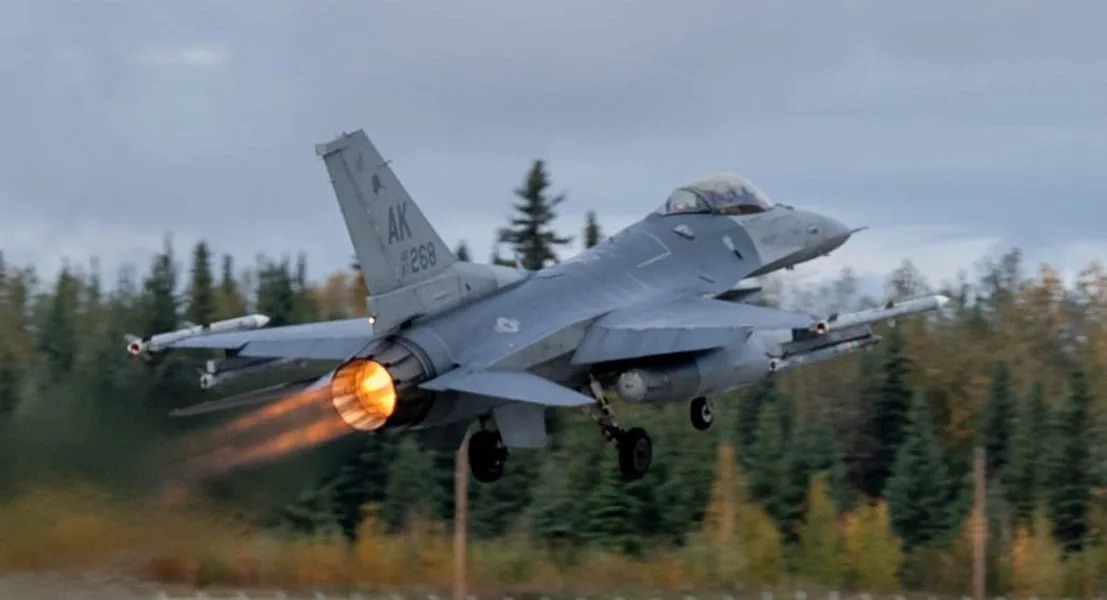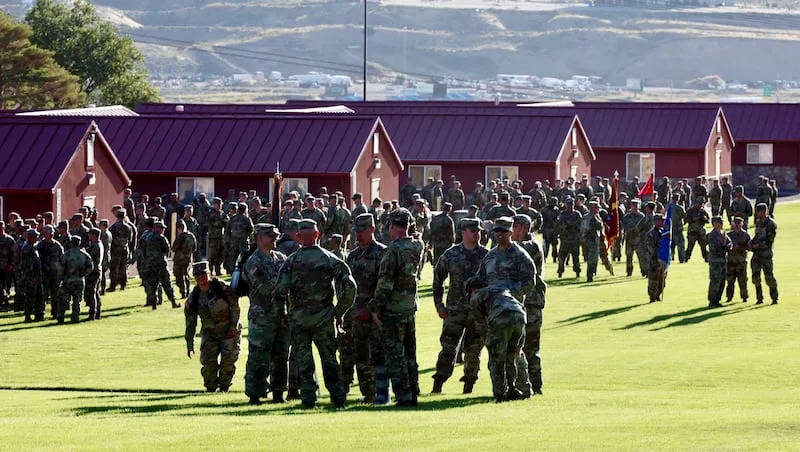
Air Force fighter jets in Alaska scrambled Sunday to intercept a Russian reconnaissance flight nearing Alaskan airspace. The intercept was the third time in less than a week that U.S. fighters launched to chase down a Russian plane, according to the North American Aerospace Defense Command, or NORAD, marking a surge in Russian prodding inside U.S. arctic airspace.
NORAD detected an Ilyushin IL-20 “Coot,” a Cold War-era Russian reconnaissance plane, inside the Alaskan Air Defense Identification Zone (ADIZ) on Aug. 24. In response, NORAD controllers scrambled several aircraft, including two F-16 fighters, to “intercept and visually identify the Russian aircraft.”
“The Russian military aircraft remained in international airspace and did not enter American or Canadian sovereign airspace,” NORAD said in a release on Sunday. “This Russian activity in the Alaskan ADIZ occurs regularly and is not seen as a threat.”
Russian flights in the ADIZ often draw attention, but are legal. U.S. sovereign airspace and waters extend 12 miles from land, and any flight inside that line would be considered a major incident. But the run-ins with Russian planes generally occur farther out from shore where the U.S. — like many nations — maintains an ADIZ up to about 150 miles from shore.
Russian planes have a long history of venturing into the area to provoke U.S. responses, but all flights in the space are legally in international airspace.
Top Stories This Week
King of Malaysia cancels purchase of UH-60 Black Hawks, calling them ‘flying coffins’
By Matt White
It was the third such instance in five days. On Aug. 20 and Aug. 21 an IL-20 was spotted inside the Alaska ADIZ. NORAD did not say if it was the same plane in each case.
In each instance, NORAD scrambled U.S. aircraft including two F-16 fighter jets and at least one KC-135 tanker. In the Aug. 21 and Aug. 24 incidents, an E-3 Sentry airborne warning and control system (or AWACS) plane joined. Sunday’s incident saw a second KC-135 scrambled as well.
NORAD monitors the Alaska ADIZ through a network of ground and airborne radar systems.
The interceptions started five days after Russian President Vladimir Putin visited Alaska for a summit with President Donald Trump about the war in Ukraine. While on the ground, several F-35 fighter jets and a B-2 Spirit stealth bomber flew over Putin after he arrived at Joint Base Elmendorf-Richardson.
NORAD often scrambles fighters to intercept Russian planes in the Alaska ADIZ. Last summer six American and Canadian fighter jets were sent to monitor a rare joint Russian and Chinese bomber formation that was spotted in the zone.
Additionally, U.S. Indo-Pacific Command is currently carrying out the biennial Northern Edge exercise with the Canadian military, a sprawling war game across Alaska and in adjacent international waters. The exercise involves thousands of troops, more than 100 aircraft and a carrier strike group.








Comments